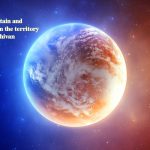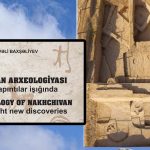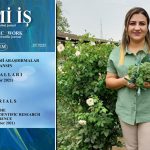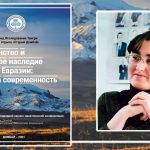GAMIGAYA PETROGLYPHS BOOK
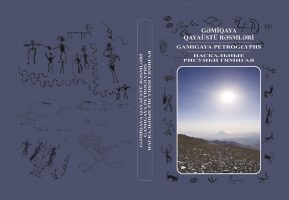
Gamigaya (rock-ship) monuments are ancient
cultural and art treasures of Azerbaijan
Petroglyphs in different areas of the world are of rare monuments which have great importance as historical sources and always attract investigators of archeology, art studies, etnography, linguistics, folklore studies, zoology and other branches of science. Such monuments, considered to be the mysterious stone chronicles of our modern time, have been discovered in France (Shaffo and Limeylya), Spain (Altamir, Hornos-de-la Penya, Pasiega), Australia (Tasmania), Africa (Tasilli and Adjara), Central Asia (Seymalitash), Ural, (Karova) Siberia (Tom and Anagara riverbanks), Korelia (The White Sea and shores of Onega lakes), Chukotka, South America and other regions of the world.
Compared to other above-mentioned countries geography of the petroglyphs in Azerbaijan is wider and more ancinet. Even though the revealed petroglyphs in different regions of Azerbaijan are partially similar to the ones in Daghistan, Anatolia, Iran, Central Asia and Siberia for some features, they have their own specific originality and historical elements. Today, Gamigaya petroglyphs in Ordubad region of Nakhchivan Autonomous Republic draw the attention of the scholars as much as the ones in the Caucasus.
Vali Aliyev, the corresponding member of Azerbaijan National Academy of Sciences, doctor of historical sciences, professor said: “The ancient petroglyphs in different neighbouring regions of the Lesser Caucasus are similar to the one another for their engraving techniques, motives, compositioned scenes and semantic subject. The petroglyphs in Azerbaijan are also closely connected with the art monuments of Anatolia. Human and animal descriptions (goat, dog and so on) in Hakkari, Palany and Beldibi regions of Anatolia, belonging to Neolithic period and Bronze age have analogical similarities for their motives, sketchy characters with those in Gamigaya, Kalbajar, Gobustan and also other regions of the Lesser Caucasus and in the Northern Caucasus. But the engraved hunting scenes, different pictographic signs on Gamigaya petroglyphs in the area of Nakhchivan obviously prove that they have rather ancient history than the others.”
Though geologists discovered petroglyphs in Nakhchivan AR in 1965, they started to attract explorers’ attention after 1968, and Gamigaya petroglyphs have been the subject to many scientific works and new scientific results have been obtained.
As it was mentioned in the decree signed by the Chairman of the Supreme Majlis of Nakhchivan Autonomous Republic as for April 26, 2001 “On the investigation of Gamigaya monument in Ordubad region”: “Investigation of Gamigaya began in 1970s- in the first period of political leadership of respected Heydar Aliyev in Azerbaijan. In 1971, the Presidium of the Azerbaijan National Academy of Sciences made a decision to investigate, publish scientific album, and to make a popular scientific film on Gamigaya, and research works have been carried out in Gamigaya and lots of scientific materials have been published during 1970-1987.”
Even though research works were stopped because of the social-political situation of the Republic of Azerbaijan at the end of 1980s, regular scientific expeditions were organized to Gamigaya as for 2001 with the initiative of the genius leader Heydar Aliyev`s coming back to the political power for a second time. As the result of all these, many academic conferences and symposiums were held dedicated to Gamigaya monuments, tens of books and scientific articles were published.
By the care and attention of the Chairman of Supreme Majlis, the activity of academic expeditions was well-provided, roads to Gamigaya were reconstructed and all measures to protect the monuments were taken respectively. In 2001, 2002, 2005, 2013 Mr. Vasif Talibov, the Chairman of Supreme Majlis, visited Gamigaya and watched the areas where the petroglyphs were engraved, met with the investigators and gave relevant recommendations. On December 21, 2013 the Chairman of Supreme Majlis of Nakhchivan Autonomous Republic also participated in the inauguration ceremony of Gamigaya State History-Art Reserve Museum which is 2500 meters above sea level, one of the highest regions of the world. High value by the Chairman of the Supreme Majlis, and his high precision and care shown to the exploration of Gamigaya monuments are patriotism manifest for the scientists to protect the values of their national history.
Taking into consideration the worldwide values of Gamigaya monuments and its importance in learning the ancient history of our people, an International Expedition operated in Gamigaya from July 17 to 20, 2005 and final results were discussed with the participation of the Chairman of Supreme Majlis of Nakhchivan AR, Mr. Vasif Talibov. In addition to this, the international symposium on “Nakhchivan: as an ancient settlement and township building place” held in Nakhchivan city from July 20 to 24, 2001 was organized in Garangush territory of Gamigaya
Pursuant to the decision of the Cabinet of Ministers of Nakhchivan Autonomous Republic as for May 5, 2006 Gamigaya State History-Art Reserve was established.
There are different views on the number of paintings, their spreading areals, engraving technique, period and as well as meaning among the investigators of Gamigaya monuments. Thus, Vali Aliyev, one of the first investigators of Gamigaya monuments, stressed out that there were more than 2000 petroglyphs and they were engraved with scribbling, battering and scuffing techniques. He also mentioned that those petroglyphs were related to the social life style, ideology, different customs, aesthetic and philosophical views of people. According to him, a concrete group of pictograms dates back to the IV-III millennium B.C., while majority of schematic goat, ox and human petroglyphs belong to the IV-II millennium BC.
Deceased Abulfas Husseyni, the linguistic scholar, PhD in philology noted that, Noah storm took place in this very area and people who survived the storm engraved the events, household ceremonies and their imaginations about the heavenly bodies on the stones.
Arif Gadim, the author of the first documentary film on Gamigaya, the honored art worker of Azerbaijan, noted that investigations started there in 1965. In one of his articles, he writes: “Our forefathers who lived here at that time tried to convey what they were experiencing to us only with conventional drawings, that is, imprecise details.”
The Associate Member of the Academy of Sciences, doctor of sciences in history Vali Bakhshaliyev also mentioned that nearly 2000 petroglyphs have been identified here and the writings which are related to not only with semi-nomadic cattle breeding, but also with the beliefs of people have been engraved by carving, scribbling and battering techniques on the rocks. Historical origins of the very petroglyphs, their explanation, their division into periods, their mythology and topography of their placement take an important place in Vali Bakhshaliyev’s researches. In his opinion, Gamigaya petroglyphs date back to the IV-II millennium BC.
The Associate Member of ANAS, the doctor of sciences in history Fakhraddin Safarli however, didn’t give information about the number of them, but noted that they were engraved on rocks with scuffing technique and the petroglyphs were related to the lifestyle, ideology, aesthetic tastes, customs and traditions of people. Fakhraddin Safarli also notes that the petroglyphs belong to the IV-I millennium BC.
Najaf Museyibli, the doctor of sciences in history emphasized that the number of petroglyphs were more than 1000 and they were engraved by carving, scuffing, battering techniques, and as well as they were related to the outlook, environment, lifestyles, farming activity and religious beliefs of people. Additionally, N. Museyibli noted that those petroglyphs belong to the IV-I millennium BC.
Abbas Seyidov, the doctor of sciences in history underlined that there were more than 1000 petroglyphs on rocks engraved by carving, scuffing and scribbling techniques and they were related not only to nomadic life, but also the ideological views of the people. A. Seyidov related Gamigaya petroglyphs to the IV-I millennium BC.
Deceased Ajdar Farzali, the Ph.D. in philology, for the first time systematically analyzing Gamigaya-Gobustan petroglyphs on scientific, historical, comparative and methodological aspects, arrived at such a conclusion that the mentioned petroglyphs should represent the civilization that hasn’t been investigated much so far. The very civilization emerged before the civilizations and cultures such as ancient Greek, Hindu, Egyptian, Sumerian, etc. and had a profound effect on all those civilizations and cultures that came after. Gamigaya-Gobustan culture directly belongs to the people of Azerbaijan (Oghuz). The scientist also underlined that the 20 scripts out of 24 which he found in Gamigaya were an obvious proof that Turkic-Azerbaijani alphabet was based on the Gamigaya-Gobustan alphabet.
Gamigaya petroglyphs were also studied by etnographer-scientists (A. Abbasov, G. Gadirzadeh) and their compared analysis with material-cultural monuments found during archaeological excavations were given.
In August, 2016 “Gamigaya expedition” was organized and sent there by the Supreme Majlis of Nakhchivan Autonomous Republic in order to investigate and study exact spreading areal of petroglyphs, their number, engraving techniques and other related issues.
The members of “Gamigaya expedition” together with the employees of Gamigaya State History-Art Museum systematically investigated and registered the petroglyphs on rocks in different areas lying on more than one thousand hectares of Gamigaya summer pasture – starting from the places named Neftly on the northern west of Gapijig peak, Ashaghy and Yukhary Bajalar (Lower part and Upper part Chimneys) to Lakes in the west of the peak, Garangush (Swallow) summer pasture, Nuh-nabi yurdu (the land of Nabi), Nazagha in the south-west of the peak, Giz-galin (Maiden-bridal) hollow situated in the valley of Paraghachay in the south of Gapijig peak.
Gamigaya summer pasture is situated in the north-east from Paraghachay settlement and Tivi village in Ordubad region of Nakhchivan Autonomous Republic, to the east of the Nasirvaz village, in the center of Zangazur mountain range-the highest one of the Lesser Caucasus. The central part of the range consists of Gazangoldagh (3815,5 m), Davaboynu (3650,5 m) and Gapijig (3906 m) and other peaks of absolute height more than 3500 meters. Watery mountain rivers like Nasirvazchay and Paraghachay take their sources from the tens of emerald-eyed springs flowing to the foot of Gapijig peak. Though the main road to Gamigaya summer pasture is from Nasirvaz village, it is possible to reach Giz-galin hollow from the settlement Paraghachay through the circular road built in 2016 and in addition to this, Garangush summer pasture and Gamigaya State History-Art Museum.
During the researches and investigations, stones having descriptions on in all regions were found and numbered and the photos of the petroglyphs on them were taken, first the original form then whitened with chalk, information about the position of the stone, its size, shape, the number of signs and petroglyphs on it, engraving technique and meaning were noted thoroughly.
The exceptional place of human figures draws the attention among Gamigaya petroglyphs. Man`s being the most exalted being, his governing and dominating abilities are clearly noticed both in individual and grouped descriptions The above-mentioned fact is felt in some pictures which describe how a human tame deer, mountain goats, horses and oxen putting ropes (cords) around some of their heads and leading them, as well as ruling them using sticks or whips.
And even, on some of the musical instruments described in those compositions could be rather interesting for the investigators studying the history of our national music. Thus, describedin such kind of compositions, a saz-shaped musical instrument in the hand of a human figure from a dancing group could be considered as one of the undeniable facts proving the old historical roots of ozan or ashug profession.
However, the great number of Gamigaya petroglyphs consists of animalistic snakes, goats, deer, leopards and oxen on monuments, there are also a few number of wolves, dogs, horses, birds, mythical dragons and other animals as well. The majority of oxen were described harnessed to the carriages. Goat descriptions dominate among animal petroglyphs. Possible to say that in one of every two stones a goat description is seen. The goats were described both in schematic and real style. The similarity between the goat petroglyphs in schematic style and the ones engraved shagily on the jugs found from the Ovchular hill of Sharur region dating back to the V millennium BC prove that schematic descriptions in Gamigaya also belong to the V millennium BC. In real style, animal petroglyphs especially in the form of joined-body triangle and eternity signs were met in Garangush summer pasture and Gizgalin hollow. The goat descriptions of this motive were described by scribbling on monochrom painted plates which belong to Bronze age of Nakhchivan and Urmia with black colour, also on grey coloured earthen-ware crockery of Khojali-Gadabey culture belonging to the late Bronze Age and the early Iron Age. The similar petroglyphs of some Gamigaya goat exist on delft-ware plates found in settlements of Nakhchivan belonging to Eneolithic and Bronze Ages.
There are many petrogliphs among Gamigaya descriptions which reflect life styles of people, their beliefs, mythical thoughts, astronomic scopes, having imcomprehensible symbolic meaning and drawn with confusing lines. This album-catalogue, prepared and published under the support of the Chairman of Supreme Majlis of Nakhchivan Autonomous Republic, is of great importance for the investigators and scholars who are trying to reveal the secret of petroglyphs and as well as for the readers who are eager to learn our national culture and its past.
Hereby, during the investigations carried out in August- September of 2016 by the members of Gamigaya expedition the following facts over the provisional regions were registered. During registration some difficulties were met in reading and understanding meanings as the drawings were engraved one after another for many times. Therefore, such kind of drawings were registered as mixed ones to avoid mistakes.
- The total area of Gamigaya petroglyphs – 136,58 hectares
Including regions:
- Ashaghy Baja – 17,79 hectares
- Lakes-Garangush – 83,99 hectares
- The land of Nuh-nabi, Nazagha – 25,83 hectares
- Gizgalin hollow – 8.97 hectares
- The total number of stones in Gamigaya having petroglyphs on and the total number of petroglyphs and signs on them.
The number of stones having petroglyphs on – 2029
The number of petroglyphs and signs on stones – 7378
- Ashaghy Baja (Lower part chimney) – 4 stones, 24 descriptions
- Ashaghy Gollar (Lower part lakes) – 89 stones, 239 descriptions
- Orta Gollar (Middle part lakes) – 113 stones, 422 descriptions
- Yukhary Gollar (Upper part lakes) – 83 stones, 275 descriptions
- Garangush (Swallow) I (up the road) – 450 stones, 1356 descriptions
- Garangush (Swallow) II (down the road) – 514 stones,1680 descriptions
- The land of Nuh-nabi – 36 stones, 178 descriptions
- Nazagha – 9 stones, 37 descriptions
- Giz-galin (Maiden-bridal) hollow – 731 stones, 3167 descriptions
III. The number of stones and petroglyphs taken from the Garangush summer pasture to the museums:
The number of stones having petroglyphs on – 11
The number of petroglyphs and drawings on stones – 44
- In Gamigaya State History-Art Reservation Museum – 6 stones, 19 descriptions
- In Ordubad Region History-Ethnography Museum – 2 stones, 13 descriptions
- In Nakhchivan State History Museum – 2 stones, 8 descriptions
- “Khan Palace” State Historical-Architectural Museum,
Momina Khatun and the Museum Complex in the open air – 1 stone, 4 descriptions
If we add the number of petroglyphs and signs on stones taken from Gamigaya (Garangush summer pasture) to the museums to the total number, the result would be as follows:
The total number of stones having petroglyphs on – 2040
The total number of drawings and signs on the stones – 7422
In consclusion, the spreading areal of petroglyphs in Gamigaya is 136,58 hectares, the number of stones having petroglyphs on is 2040, the number of petroglyphs on stones is 7422. Above all, I would like to note that it is the first time that 6000 of those petroglyphs got published.
Gamigaya monuments take us to the most ancient times of the national-spiritual world of Azerbaijan people with its “written” stone chronicles. To preserve this treasure, to learn and convey it to the next generations are duties for each and every Azerbaijani citizen.
Nizami Alıyev,
Art Critic, the head of Gamigaya Expedition



